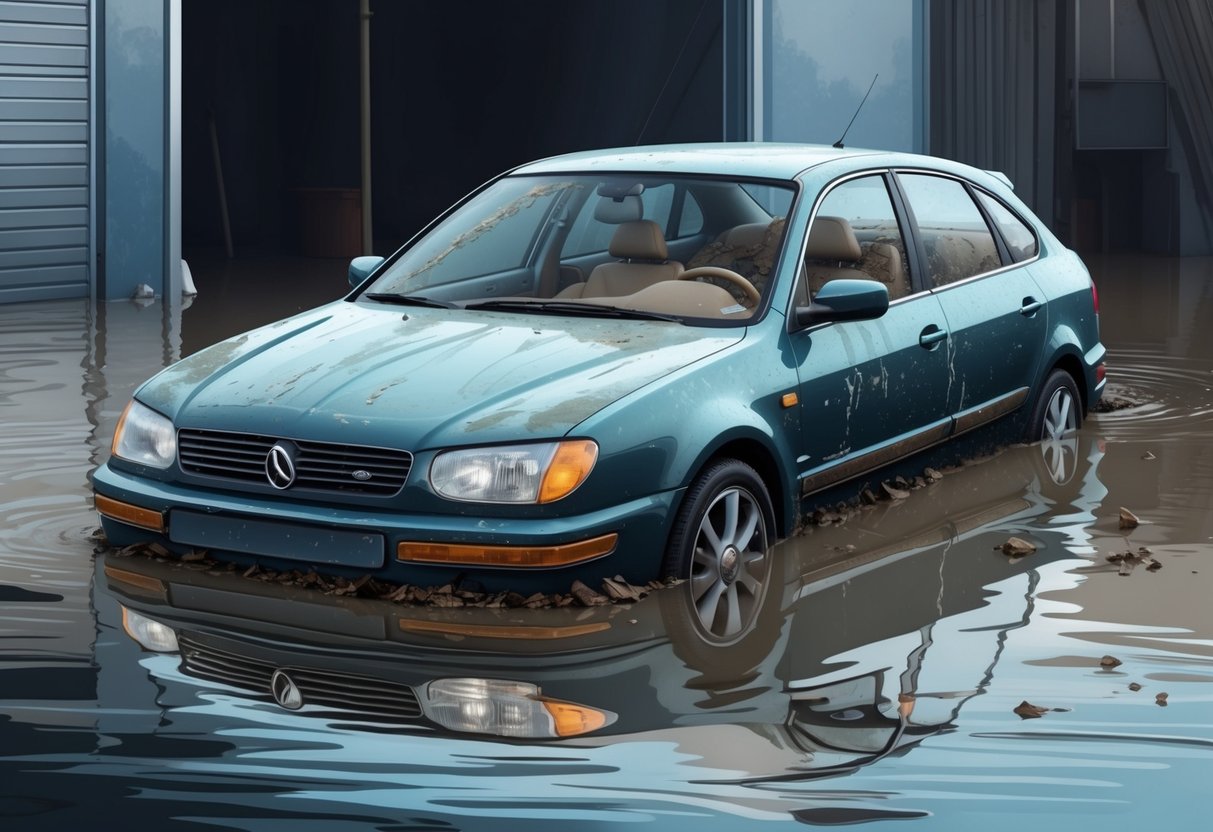
Geographic Risks and Seasonal Considerations
Flood-damaged vehicles often appear in specific regions and times of year, especially following hurricanes and periods of heavy rain. Understanding these patterns helps buyers assess risk and make informed choices.
Areas Prone to Flood-Damaged Cars
Certain geographic regions in the United States are much more likely to have flood-damaged cars. Coastal states, especially along the Gulf of Mexico, such as Texas, Louisiana, and Florida, are frequently impacted by severe flooding linked to hurricanes and tropical storms.
River valleys and low-lying areas in the Midwest are also notable risk zones. After major flood events, some of these vehicles end up being transported to other states, where buyers may not expect water damage.
Urban areas with poor drainage can experience flash floods that damage local inventory. It’s important to pay attention to a car’s registration history and look for vehicles originally titled or sold in regions with frequent flooding, as these may present hidden risks.
Risks During Hurricane Season
Hurricane season in the U.S. typically runs from June 1 to November 30, with the peak occurring in late summer and early fall. During and after these months, the number of flood-damaged cars entering the used car market increases significantly.
Dealers and private sellers may try to quickly offload flood-damaged vehicles to unsuspecting buyers, sometimes moving them across state lines to places less prone to flooding. Floodwaters during hurricanes can reach several feet, often submerging vehicles above the floorboards and causing significant hidden damage.
Be alert for vehicles with histories tied to storm-affected counties during this period. Scrutinizing the vehicle’s history and signs of water exposure such as musty odors, water stains, or electrical issues is crucial during the months following major hurricanes.
Case Study: Hurricane Helene
Hurricane Helene, while not striking the United States directly, serves as an instructive example of the risks posed by severe weather events. In 2018, Helene brought record rainfall and coastal flooding across parts of Western Europe, resulting in thousands of water-damaged vehicles.
Many of these vehicles, though outside the U.S., entered secondary markets across the continent. Unscrupulous sellers attempted to clean and resell these cars without disclosing the water exposure.
Checking registration records, using flood-damage inspection tips, and understanding the impact zones of major hurricanes help prevent ending up with a flood-damaged car.
Frequently Asked Questions
Identifying a flood-damaged vehicle is challenging but crucial for avoiding hidden safety issues and unexpected costs. Several inspection tips, legal requirements, and risk factors can help consumers make informed decisions when buying a used car.
What are the signs of flood damage when inspecting a used car?
Recognizable signs include rust or corrosion on bolts, screws, and undercarriage components. Moist carpets, foggy headlights, and a damp or mildew odor also signal prior water exposure.
Water stains or lines along door panels and upholstery further indicate possible flood damage. A thorough smell and touch test can reveal hidden moisture.
Unusual electrical malfunctions or inconsistent warning lights may also suggest water intrusion. Buyers should inspect wiring, seat mounts, and spare tire wells for any unexplained moisture or corrosion.
Can a flood-damaged vehicle be fully repaired, and what are the potential risks?
While some flood-damaged cars may be repaired, restoring the vehicle to pre-flood safety or reliability is difficult. Electrical systems, brakes, and airbags can develop problems later, even if they seem functional initially.
Risks include hidden rust, persistent electrical faults, engine issues, and foul odors. Insurance companies may label such vehicles as salvage, impacting resale value and coverage options.
Vehicle owners often face increased maintenance and unpredictable repair costs over time.
Is it legal for dealerships to sell cars with flood damage, and must they disclose this?
Laws differ by state, but many jurisdictions require dealers to disclose significant flood-related damage to potential buyers. In some places, like Florida, dealers can legally sell cars with water damage as long as the buyer is notified of the issue beforehand.
Disclosure rules may apply to private sellers and auctions as well. Consumers should check the vehicle history report, look for branded titles such as “flood” or “salvage,” and always ask the seller directly about past damage.
What steps should be taken to assess a car for low water flood damage?
Begin by smelling for musty odors and feeling for dampness in carpeting and floor mats. Check hard-to-reach areas like under the seats, inside the glove box, and in the trunk for signs of moisture or silt deposits.
Inspect metal parts beneath the dashboard and seat rails for corrosion. Look for clear water lines, stains, or mud in seams and crevices.
Have a trusted mechanic perform a detailed inspection and run electronic diagnostics to highlight hidden issues.
What are the advantages and disadvantages of purchasing a car with flood damage?
Flood-damaged cars are often sold at a lower price, which can be attractive to budget-conscious buyers or those seeking parts. However, buyers take on significant risks, including potential mechanical and electrical failures, persistent odors, and difficulties in resale.
Insurance coverage may be limited or unavailable for vehicles with flood or salvage titles. Even after repairs, the long-term reliability of these cars can be compromised, resulting in higher lifetime maintenance costs.
How do car auctions like Copart handle flood-damaged cars, and what should buyers beware of?
Auctions often sell flood-damaged vehicles under clear branding, such as “flood” or “water damage.” Buyers must review all available documentation carefully.
Condition reports and photos are provided. These are not always comprehensive.
Auction vehicles are usually sold “as is,” without warranties. It’s important to research common problems in flood damaged cars.
If possible, inspect the vehicle in person or use a third-party inspection service to reduce the risk of unexpected repairs.